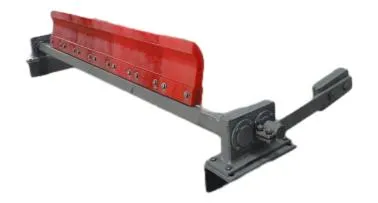 Afrikaans
Afrikaans  Albanian
Albanian  Amharic
Amharic  Arabic
Arabic  Armenian
Armenian  Azerbaijani
Azerbaijani  Basque
Basque  Belarusian
Belarusian  Bengali
Bengali  Bosnian
Bosnian  Bulgarian
Bulgarian  Catalan
Catalan  Cebuano
Cebuano  Corsican
Corsican  Croatian
Croatian  Czech
Czech  Danish
Danish  Dutch
Dutch  English
English  Esperanto
Esperanto  Estonian
Estonian  Finnish
Finnish  French
French  Frisian
Frisian  Galician
Galician  Georgian
Georgian  German
German  Greek
Greek  Gujarati
Gujarati  Haitian Creole
Haitian Creole  hausa
hausa  hawaiian
hawaiian  Hebrew
Hebrew  Hindi
Hindi  Miao
Miao  Hungarian
Hungarian  Icelandic
Icelandic  igbo
igbo  Indonesian
Indonesian  irish
irish  Italian
Italian  Japanese
Japanese  Javanese
Javanese  Kannada
Kannada  kazakh
kazakh  Khmer
Khmer  Rwandese
Rwandese  Korean
Korean  Kurdish
Kurdish  Kyrgyz
Kyrgyz  Lao
Lao  Latin
Latin  Latvian
Latvian  Lithuanian
Lithuanian  Luxembourgish
Luxembourgish  Macedonian
Macedonian  Malgashi
Malgashi  Malay
Malay  Malayalam
Malayalam  Maltese
Maltese  Maori
Maori  Marathi
Marathi  Mongolian
Mongolian  Myanmar
Myanmar  Nepali
Nepali  Norwegian
Norwegian  Norwegian
Norwegian  Occitan
Occitan  Pashto
Pashto  Persian
Persian  Polish
Polish  Portuguese
Portuguese  Punjabi
Punjabi  Romanian
Romanian  Russian
Russian  Samoan
Samoan  Scottish Gaelic
Scottish Gaelic  Serbian
Serbian  Sesotho
Sesotho  Shona
Shona  Sindhi
Sindhi  Sinhala
Sinhala  Slovak
Slovak  Slovenian
Slovenian  Somali
Somali  Spanish
Spanish  Sundanese
Sundanese  Swahili
Swahili  Swedish
Swedish  Tagalog
Tagalog  Tajik
Tajik  Tamil
Tamil  Tatar
Tatar  Telugu
Telugu  Thai
Thai  Turkish
Turkish  Turkmen
Turkmen  Ukrainian
Ukrainian  Urdu
Urdu  Uighur
Uighur  Uzbek
Uzbek  Vietnamese
Vietnamese  Welsh
Welsh  Bantu
Bantu  Yiddish
Yiddish  Yoruba
Yoruba  Zulu
Zulu different types of conveyor rollers
Different Types of Conveyor Rollers
Conveyor rollers are essential components in material handling systems, facilitating the movement of goods and products in various industrial settings
. They come in various designs and materials, each tailored to meet specific operational requirements. Understanding the different types of conveyor rollers can help businesses optimize their material handling processes.1. Steel Rollers Steel rollers are among the most common types used in conveyors. Their robust construction enables them to handle heavy loads and withstand harsh conditions. Steel rollers are often used in applications involving heavy machinery, mining, and manufacturing. They can be coated with materials like rubber or polyurethane to reduce noise and prevent slippage.
2. Plastic Rollers Lightweight and resistant to corrosion, plastic rollers are ideal for environments where hygiene is essential, such as the food processing industry. They are also quieter than steel rollers, making them suitable for applications where noise reduction is crucial. Additionally, plastic rollers are available in various configurations and colors, allowing for better integration into conveyor systems.
3. Gravity Rollers Gravity rollers are designed to allow products to move freely along the conveyor without the need for powered assistance. These rollers rely on gravity to transport goods and are commonly used in warehouses and distribution centers. They are ideal for conveyor systems that prioritize energy efficiency and require minimal maintenance.
different types of conveyor rollers

4. Powered Rollers Unlike gravity rollers, powered rollers use an external motor to drive the movement of goods along the conveyor. This type is ideal for applications that require precise control over product movement and can handle heavier loads. Powered rollers are often employed in automated sorting systems, assembly lines, and packaging operations.
5. Specialty Rollers In addition to standard types, specialty rollers are designed for specific applications. For example, spiral rollers are used in curved conveyor systems, while small-diameter rollers are suitable for compact setups. Moreover, heavy-duty rollers can support extreme workloads in industrial environments.
6. Adjustable Rollers These rollers allow for adjustments in height or spacing, providing versatility in conveyor design. They enable users to customize their conveyor systems based on changing operational needs, making them a popular choice in dynamic environments.
In conclusion, the selection of conveyor rollers—whether steel, plastic, gravity, powered, or specialty—depends on the specific requirements of the application. Understanding the strengths and limitations of each type can lead to improved efficiency and productivity in material handling processes. Businesses should assess their operational needs carefully to choose the most suitable roller type for their conveyor system.
-
Revolutionizing Conveyor Reliability with Advanced Rubber Lagging PulleysNewsJul.22,2025
-
Powering Precision and Durability with Expert Manufacturers of Conveyor ComponentsNewsJul.22,2025
-
Optimizing Conveyor Systems with Advanced Conveyor AccessoriesNewsJul.22,2025
-
Maximize Conveyor Efficiency with Quality Conveyor Idler PulleysNewsJul.22,2025
-
Future-Proof Your Conveyor System with High-Performance Polyurethane RollerNewsJul.22,2025
-
Driving Efficiency Forward with Quality Idlers and RollersNewsJul.22,2025





























